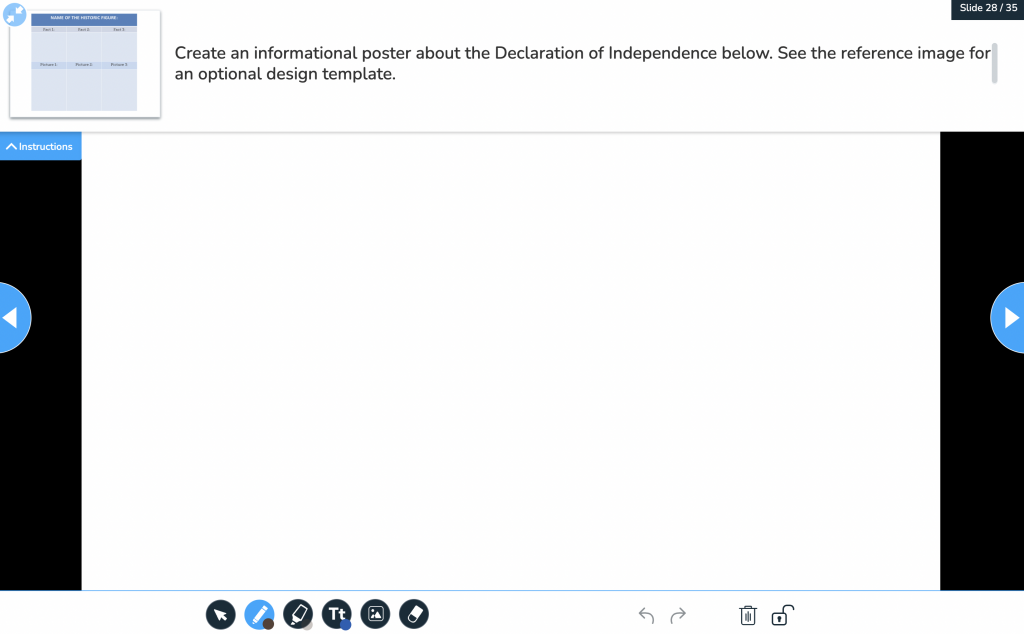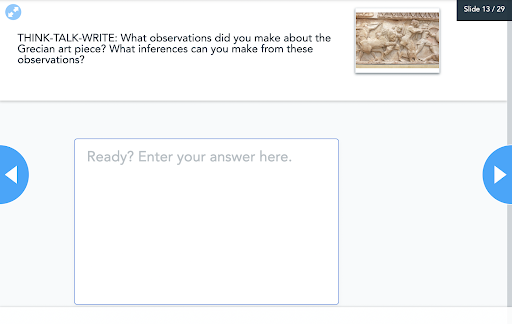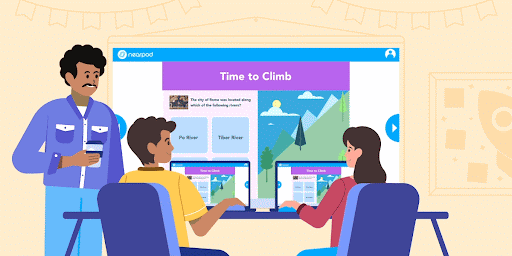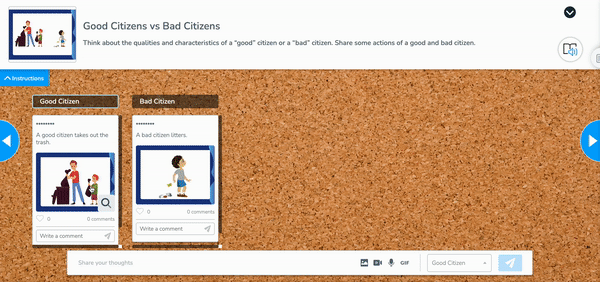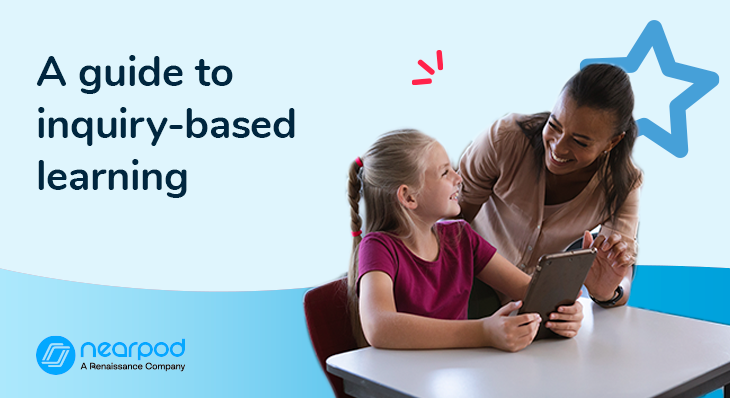
What is inquiry-based learning?
Inquiry-based learning focuses on student choice and students’ curiosity. It goes beyond simple research, involving problem-based learning and active investigation into interesting and relevant topics. The main element of inquiry-based instruction is students developing their own questions and researching topics that captivate their interest.
This teaching approach encourages students to take ownership of their learning and fosters critical thinking skills. The role of the teacher is to guide the process and provide structure, ensuring that inquiry activities align with educational goals.
For example, students may explore the Civil War by choosing a specific aspect to research, such as important leaders or strategies, and then create a research question to guide their investigation. In inquiry-based teaching, the role of the teacher is to guide students through the process, which Nearpod is a great tool for. Additionally, tech tools like Nearpod can help facilitate structured inquiry, where the steps are clearly outlined, allowing students to ask questions and engage in meaningful research.
New to Nearpod? Teachers can sign up for a free Nearpod account below to access these resources, interactive activities, and engaging lessons. Administrators can schedule a call with an expert to unlock the full power of Nearpod for schools and districts.
Guide to inquiry-based learning with examples
Nearpod has tons of K-12 lessons that are examples of inquiry-based learning. Here are a few of my favorites:
- Exploring The US Declaration of Independence (Grades K – 5th): In this Nearpod Virtual Reality (VR) Mini-lesson, students investigate the background and legacy of the Declaration of Independence, including its statement that all men were created equal. Students take virtual field trips and create a poster to share what they learn.
- Exploring Poetry in Nature (Grades 6th – 8th): In this VR lesson, students will strengthen their poetry skills as they learn how authors use sensation and emotion in poems. Students will explore various scenes through virtual reality experiences as inspiration for writing their own poetry.
- Exploring Ancient Empires (Grades 9th – 12th): In this VR lesson, students learn about the world’s great empires as they explore the ancient ruins of Egypt, Greece, China, and the Inca Empire via virtual reality and make predictions about values and daily life at the time. (Mature References)
- Exploring World War II (Grades 9th – 12th): In this VR lesson, students will explore the modern-day sites of major turning points in World War II. Through virtual explorations, students will evaluate decisions made at each turning point and learn how they impacted the outcome of the war.
Follow along with the following tips using the lessons above.
1. Students pick a topic
The students must first have an idea of what sort of topics are available to them. The teacher can guide the students through this process by giving them a choice on which Nearpod they want to use. For example, suppose students are engaged in inquiry about the Civil War. In that case, the teacher can present a few different Nearpod lessons to students (important leaders, battles, slavery, strategies, etc.), allowing students to choose which presentation they want to work through.
You could have students work in small groups or individually. Working in groups enables active student participation, where students can discuss their findings and tackle problem-solving tasks together. This collaborative learning environment supports the development of real-world skills, preparing students for challenges beyond the classroom.
By allowing students to work independently, they can focus deeply on their personal interests, take ownership of the research process, and develop self-directed learning habits. This approach is particularly beneficial for students who thrive in self-paced environments or prefer working at their own speed, enabling them to build confidence in their abilities.
Consider using the Student-Paced feature when launching the lesson. This feature allows the students to move through the presentation at their own pace. Students choose which of the presentations they want, and then they get started.
At the end of the presentation, the teacher can include an Open-Ended Question that asks the students to pick a more specific topic (if students chose an important leader presentation, by the end, maybe they have picked Lincoln).
The teacher could also use the Collaborate Board to encourage discussion. Students could post what their questions will be and receive feedback from their peers. Inquiry-based learning examples need peer engagement about topics.
2. Students research the topic
Once students pick their topic, they must research it. The teacher can design a self-paced presentation that helps them through the process. During inquiry-based instruction, each slide can be a different task and the presentation can include:
- Web pages with good research sites (reliable sources)
- A link to the student’s Google Drive so they can load sources they find or take notes
- Open-Ended Questions that ask students to write about the sources they find
- PDFs of a teacher or student’s examples of writing and research
- Poll Questions that check to see how students are doing with the process
- Great opportunity to use the Add Activity or Whiteboard feature
This step is the most challenging for students and requires the most teacher guidance. Formative Assessments made available through Nearpod (polls, open-ended questions, etc.) can make it much easier.
3. Students present the topic
Inquiry-based teaching challenges students to learn about something that interests them, and then take it a step further to teach their peers about what they learned. After the students write their research paper, the teacher can create a PDF and transport it into a Nearpod.
Next, students can move through the presentation at their own pace, reading the papers written by their peers.
Finally, the teacher can create a Quiz, Time to Climb, or Open-Ended Question section at the end that asks the students about what was in the papers or what they learned. This will ensure that students not only read the papers but also that the papers teach them what they are supposed to.
4. Enocurage reflections
It is important for students to learn from the inquiry process itself. Teachers can ask:
- What worked and did not work?
- What did they find most challenging?
- What would they do differently next time?
A Collaborate Board can be great for this. It gives the teacher some insight into the concerns and challenges of the students and lets the students receive feedback from their peers.
Use these examples of inquiry-based learning on Nearpod
We hope you’ll be using these inquiry-learning examples in your classroom! This guide can be used for inquiry-based teaching across all K-12 subjects. Inquiry-based learning is a powerful teaching strategy, and tools like Nearpod can help teachers facilitate it effectively.
New to Nearpod? Teachers can sign up for a free Nearpod account below to access these resources, interactive activities, and engaging lessons. Administrators can schedule a call with an expert to unlock the full power of Nearpod for schools and districts.

Will teaches 8th Grade Social Studies at Williams Middle School in Longmeadow, MA. He believes in authentic, practical instruction with an emphasis on the student’s academic and social-emotional needs.
